
Keywords: gene drive opinion

|
Gene drives could stop the world’s oldest problemsChloe Willianms, Inverse, 2020.
Kevin Esvelt worries more than the average scientist. It’s a consequence of having invented a technology powerful enough to alter an entire species. In 2013, Esvelt came up with the concept of CRISPR-based gene drive. The technology uses CRISPR, a gene editing tool, to hack ... Keywords: ethics, gene drive ethics, gene drive guidance, gene drive opinion, gene drive policy, gene drive safety, gene drive synthetic, perspective, risk |
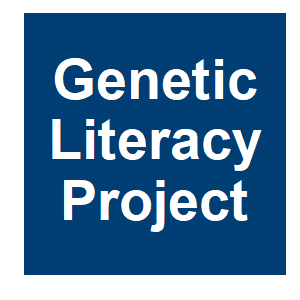
|
The risks of using gene drives to get rid of ‘pesky species’R. Lewis, Genetic Literacy Project, 2020.
The mammals of New Zealand have long posed a threat to native species. The Predator Free 2050 program is an effort to rid the island of these invaders – including using the tools of CRISPR-based genome editing to create a gene drive to jumpstart extinctions. It’s a very ... Keywords: ethics, gene drive ethics, gene drive guidance, gene drive opinion, gene drive policy, gene drive safety, gene drive synthetic, perspective, risk |

|
Irreversible ecosystem engineering with Gene Drive OrganismsSave Our Seeds, Save Our Seeds, 2020.
Gene drive technology is a particular application of the new genetic engineering tool CRISPR/Cas9. It is designed to genetically modify, replace or eradicate wild populations or entire species. So far it works in mosquitos, mice, flies, yeast and nematodes. But in principle it ... Keywords: ethics, gene drive ethics, gene drive guidance, gene drive opinion, gene drive policy, gene drive safety, gene drive synthetic, perspective, risk |

|
Gene drives : equity demands civilityN. Kofler, Nature, 565:25. 2020.
At the 14th Conference of the Parties of the United Nations Convention on Biological Diversity late last year, I witnessed the rapid deterioration of a crucial discussion. It was on the potential of synthetic biology in environmental conservation. What started as heckling turned ... Keywords: ethics, gene drive ethics, gene drive guidance, gene drive opinion, gene drive policy, gene drive safety, gene drive synthetic, perspective, risk |

|
These are the 5 most dystopian technologies of 2020 and beyondM. Sullivan, FastCompany, 2019.
Tech is always both good and bad. But we live in a time when everything gets weaponized—ideas, images, ancient texts, biases, and even people. And technology provides the tools to do it easier, faster, and with less resources. Keywords: ethics, gene drive ethics, gene drive guidance, gene drive opinion, gene drive policy, gene drive safety, gene drive synthetic, perspective, risk |

|
Exterminator genes: The right to say no to ethics dumpingBassey-Orovwuje, M., J. Thomas and T. Wakeford, Development, 62:121-127. 2019.
The scientific-industrial complex is promoting a new wave of genetically modified organisms, in particular gene drive organisms, using the same hype with which they tried to persuade society that GMOs would be a magic bullet to solve world hunger. The Gates Foundation claims that ... Keywords: ethics, gene drive ethics, gene drive guidance, gene drive opinion, gene drive policy, gene drive safety, gene drive synthetic, perspective, risk |

|
Gene drives in Africa – A PodcastWakeford, T., etc Group, 2019.
In Episode #1 ETC's Tom Wakeford speaks with Ugandan lawyer and advocate Barbara Ntambirweki about gene drives, a powerful new genetic technology that can change species in the wild and make species go extinct. Keywords: ethics, gene drive ethics, gene drive guidance, gene drive opinion, gene drive policy, gene drive safety, gene drive synthetic, perspective, risk |
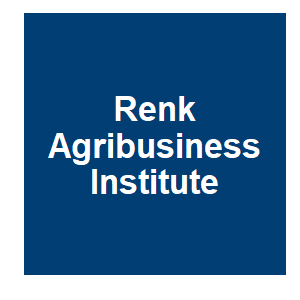
|
Gene drives in Wisconsin agriculture: What are they, and should you support it?Jones, M. and Mitchell, P. D., Renk Agribusiness Institute, 2019.
Spotted wing drosophila and citrus psyllid are not serious economic problems for Wisconsin agriculture. However, these and other smaller, geographically limited applications of gene drives are excellent ways to prove the concept and refine the methods. Pending the outcome of ... Keywords: ethics, gene drive ethics, gene drive guidance, gene drive opinion, gene drive policy, gene drive safety, gene drive synthetic, perspective, risk |

|
Gene Drive Technologies: Powerful and destructiveSWISSAID, , 2019.
Gene drive organisms can put our environment, food and health in danger: this is made clear by the video from SWISSAID, the Alliance for GMO-free Switzerland and the ETC Group. Keywords: ethics, gene drive ethics, gene drive guidance, gene drive opinion, gene drive policy, gene drive safety, gene drive synthetic, perspective, risk |
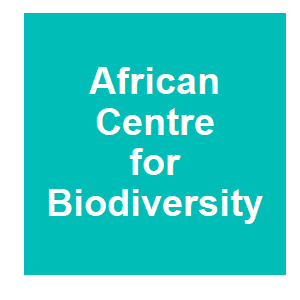
|
Gene drive organisms: What Africa should know about actors, motives and threats to biodiversity and food systemsSirinathsinghji, E., African Centre for Biodiversity., 2019.
In this briefing paper, we set out the key issues that our governments should have addressed with African civil society before endorsing positions and setting the benchmark for Africa-wide policy. In this regard, we point out that, while the impetus for the AU position might well ... Keywords: ethics, gene drive ethics, gene drive guidance, gene drive opinion, gene drive policy, gene drive safety, gene drive synthetic, perspective, risk |

|
Gene drive tested in mice – Expert ReactionScience Media Centre, Science Media Centre, 2019.
Using CRISPR genome editing, the researchers developed a process to make a gene more likely to be inherited than by chance alone. Their attempts with male mice were unsuccessful, but when it was used in females they increased the inheritance of the desired gene from 50 per cent ... Keywords: ethics, gene drive ethics, gene drive guidance, gene drive opinion, gene drive policy, gene drive safety, gene drive synthetic, perspective, risk |

|
Gene editing research highlights challenges in using CRISPR for pest controlDreaver, C, Radio New Zealand, 2019.
US researchers have had some success in using the gene editing technique CRISPR to test out a gene drive in mice, to modify their genes - highlighting the challenges researchers face if it were to be used in pest eradication. Keywords: ethics, gene drive ethics, gene drive guidance, gene drive opinion, gene drive policy, gene drive safety, gene drive synthetic, perspective, risk |

|
Tool for controlling genetic inheritance tested in mice for the first timeHays, B, UPI, 2019.
With further development we think it will be possible to make animal models of complex human genetic diseases, like arthritis and cancer, that are not currently possible, said researcher Kimberly Cooper. Keywords: ethics, gene drive ethics, gene drive guidance, gene drive opinion, gene drive policy, gene drive safety, gene drive synthetic, perspective, risk |

|
Gene Drives Work in Mice (if They’re Female)Rennie, JC, Jordana, Quanta Magazine, 2019.
Conservationists and bioethicists often regard the packages of engineered DNA called “gene drives” with a mixture of wonder, excitement and dread. Gene drives violate the normal rules of inheritance by making sure they get passed down to all of their host organism’s ... Keywords: ethics, gene drive ethics, gene drive guidance, gene drive opinion, gene drive policy, gene drive safety, gene drive synthetic, perspective, risk |

|
La reacción genética en cadena llega a los mamíferosMediavilla, D, El Pais, 2019.
Un experimento muestra que la edición de los genes puede introducir cambios en especies completas que permitan incluso su extinción en un área geográfica Keywords: ethics, gene drive ethics, gene drive guidance, gene drive opinion, gene drive policy, gene drive safety, gene drive synthetic, perspective, risk |

|
Scientists rewrite mice DNA so genes can be spread through speciesSample, I, The Guardian, 2019.
Controversial procedure has huge potential to combat diseases such as malaria Keywords: ethics, gene drive ethics, gene drive guidance, gene drive opinion, gene drive policy, gene drive safety, gene drive synthetic, perspective, risk |

|
US scientists overturn genetic inheritance rules in lab miceCookson, C, Financial Times, 2019.
New gene drive technology that could revolutionise biology research has been demonstrated for the first time in mammals, after US scientists overturned the normal rules of genetic inheritance in laboratory mice.; ; Scientists at the University of California San Diego employed the ... Keywords: ethics, gene drive ethics, gene drive guidance, gene drive opinion, gene drive policy, gene drive safety, gene drive synthetic, perspective, risk |
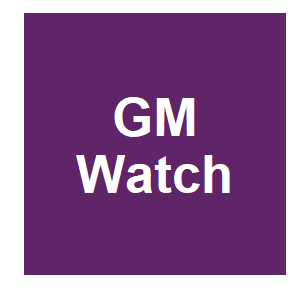
|
Gene drive mosquitoes and the new era of medical colonialismMayet, MC, L. I.; Sirinathsingji, E, GM Watch, 2019.
The highly contentious issue of gene drive technologies – a novel extreme form of genetic engineering designed to alter or even eradicate entire populations and species – was at the heart of the international negotiations at the biennial UN Biodiversity Conference held in ... Keywords: ethics, gene drive ethics, gene drive guidance, gene drive opinion, gene drive policy, gene drive safety, gene drive synthetic, perspective, risk |
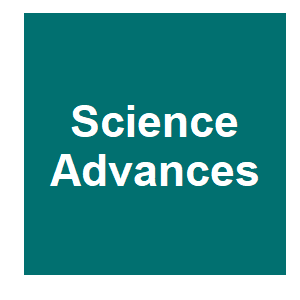
|
Does the U.S. public support using gene drives in agriculture? And what do they want to know?Jones, MSD, Jason A.; Elsensohn, Johanna; Mitchell, Paul D.; Brown, Zachary S., Science Advances, 5:eaau8462. 2019.
Gene drive development is progressing more rapidly than our understanding of public values toward these technologies. We analyze a statistically representative survey (n = 1018) of U.S. adult attitudes toward agricultural gene drives. When informed about potential risks, ... Keywords: ethics, gene drive ethics, gene drive guidance, gene drive opinion, gene drive policy, gene drive safety, gene drive synthetic, perspective, risk |
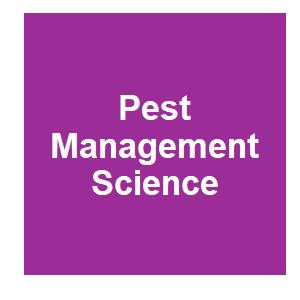
|
Killing two bugs with one stone: a perspective for targeting multiple pest species by incorporating reproductive interference into sterile insect techniqueHonma, AK, N.; Noriyuki, S., Pest Management Science, 75:571-577. 2019.
The sterile insect technique is an environmentally friendly method to control and even eradicate agricultural and veterinary insect pests without using chemical pesticides in excess. However, the continuous production and release of sterile insects is economically costly and ... Keywords: ethics, gene drive ethics, gene drive guidance, gene drive opinion, gene drive policy, gene drive safety, gene drive synthetic, perspective, risk |
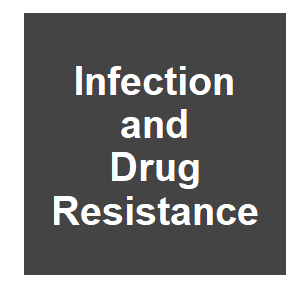
|
Gene drives as a response to infection and resistanceHayirli, TCM, P.F., Infection and Drug Resistance, 12:229-234. 2019.
Vector-borne infectious diseases continue to be a major threat to public health. Although some prevention and treatment modalities exist for these diseases, resistance to such modalities, exacerbated by global climate change, remains a fundamental challenge. Developments in ... Keywords: ethics, gene drive ethics, gene drive guidance, gene drive opinion, gene drive policy, gene drive safety, gene drive synthetic, perspective, risk |
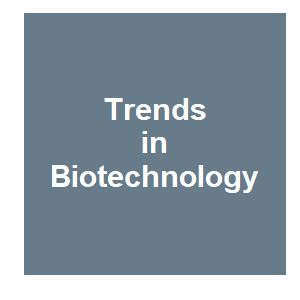
|
Safe CRISPR: Challenges and Possible SolutionsPineda, ML, A.; Collins, J. P.; Kiani, S., Trends in Biotechnology, 37:389-401. 2019.
Applications of CRISPR in human health and in gene drives are at the forefront of biological research as tools. This technology will affect humankind and our environment, so as this technology pushes forward, the design and implementation of safety measures is imperative. Novel ... Keywords: ethics, gene drive ethics, gene drive guidance, gene drive opinion, gene drive policy, gene drive safety, gene drive synthetic, perspective, risk |

|
CRISPR in sub-Saharan Africa: Applications and educationOgaugwu, CEA, S. O.; Adekoya, M. A., Trends in Biotechnology, 37:234-237. 2019.
Clustered regularly interspaced shortpalindromicrepeats (CRISPR) technology has enabled genetic engineering feats previously considered impracticable, offering great hopes for solutions to problems facing society. We consider it timely to highlight how CRISPR can benefit public ... Keywords: ethics, gene drive ethics, gene drive guidance, gene drive opinion, gene drive policy, gene drive safety, gene drive synthetic, perspective, risk |
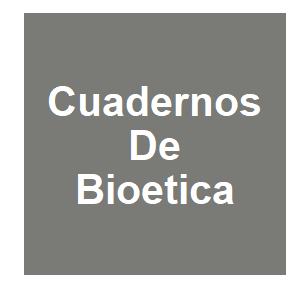
|
CRISPR-Cas9. The greatest advancement in genetic edition techniques requires an ethical reflectionGomez-Tatay, LA, J., Cuadernos De Bioetica, 30:171-185. 2019.
The adaptation of the CRISPR system as a genetic editing tool has led to a revolution in many fields of application, as this technique is considerably faster, easier to perform and more efficient than predecessor techniques. However, some of these applications raise objective ... Keywords: ethics, gene drive ethics, gene drive guidance, gene drive opinion, gene drive policy, gene drive safety, gene drive synthetic, perspective, risk |

|
A Question of Consent: Exterminator Mosquitoes in Burkina FasoETC group, , 2019.
Target Malaria’s planned release of GMO mosquitos is step toward release of gene drive mosquitoes, a high-risk technology aimed at the elimination of entire species. Hundreds of organizations have demanded a moratorium on the use of this technology outside of ... Keywords: ethics, gene drive ethics, gene drive guidance, gene drive opinion, gene drive policy, gene drive safety, gene drive synthetic, perspective, risk |

|
The Release of Genetically Engineered Mosquitoes in Burkina Faso: Bioeconomy of Science, Public Engagement and Trust in MedicineBeisel, UG, J. K., African Studies Review, 62:164-173. 2019.
Malaria, which is transmitted by mosquitoes, continues to be responsible for a significant number of disease episodes and childhood deaths on the African continent. A variety of mosquito control strategies are currently inplace, but since case numbers are rising again, and drug ... Keywords: ethics, gene drive ethics, gene drive guidance, gene drive opinion, gene drive policy, gene drive safety, gene drive synthetic, perspective, risk |

|
Governing extinction in the era of gene editingMonast, JJ, North Carolina Law Review, 97:1329-1358. 2019.
CRISPR-Cas9 genome-editing technology (“CRISPR”) offers a potential solution for some of the world’s critical conservation challenges. Scientists are harnessing CRISPR to expand genetic diversity of endangered species, control invasive species, or enhance species’ ... Keywords: ethics, gene drive ethics, gene drive guidance, gene drive opinion, gene drive policy, gene drive safety, gene drive synthetic, perspective, risk |
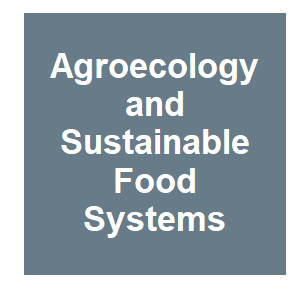
|
Gene driving the farm: who decides, who owns, and who benefits?Montenegro de Wit, M, Agroecology and Sustainable Food Systems, 43:1054-1074. 2019.
This commentary essay explores the social and ecological implications of gene-driving agriculture. Keywords: ethics, gene drive ethics, gene drive guidance, gene drive opinion, gene drive policy, gene drive safety, gene drive synthetic, perspective, risk |
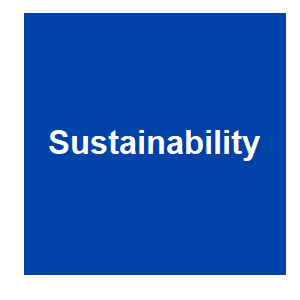
|
Sustainability as a framework for considering gene drive mice for invasive rodent eradicationBarnhill-Dilling, SKS, M.; Blondel, D. V.; Godwin, J., Sustainability, 11:1334. 2019.
Gene drives represent a dynamic and controversial set of technologies with applications that range from mosquito control to the conservation of biological diversity on islands. Currently, gene drives are being developed in mice that may one day serve as an important tool for ... Keywords: ethics, gene drive ethics, gene drive guidance, gene drive opinion, gene drive policy, gene drive safety, gene drive synthetic, perspective, risk |
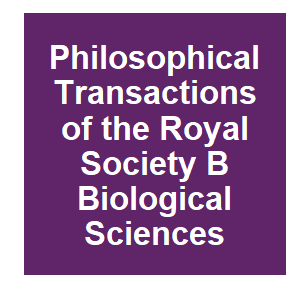
|
The ethics of genome editing in non-human animals: a systematic review of reasons reported in the academic literaturede Graeff, NJ, K. R.; Johnston, J.; Hartley, S.; Bredenoord, A. L., Philosophical Transactions of the Royal Society B-Biological Sciences, 374:1-25. 2019.
In recent years, new genome editing technologies have emerged that can edit the genome of non-human animals with progressively increasing efficiency. Despite ongoing academic debate about the ethical implications of these technologies, no comprehensive overview of this debate ... Keywords: ethics, gene drive ethics, gene drive guidance, gene drive opinion, gene drive policy, gene drive safety, gene drive synthetic, perspective, risk |

|
Evaluating the Probability of CRISPR-based Gene Drive Contaminating Another SpeciesCourtier-Orgogozo, VD, Antoine; Gouyon, Pierre-Henri; Boëte, Christophe, bioRxiv, 776609:27. 2019.
The probability D that a given CRISPR-based gene drive element contaminates another, non-target species can be estimated by the following Drive Risk Assessment Quantitative Estimate (DRAQUE) Equation: D = (hyb+transf).express.cut.flank.immune.nonextinct withhyb = probability of ... Keywords: ethics, gene drive ethics, gene drive guidance, gene drive opinion, gene drive policy, gene drive safety, gene drive synthetic, perspective, risk |

|
Target Malaria’s Gene Drive Project Fails to Inform Local Communities of Risks: New Filmetc group, etc group, 2018.
Target Malaria, a research consortium that aims to eradicate malaria-carrying species of mosquitoes using new genetic modification tools, does not have proper consent from communities for its experiment. That is the main message of a new short film that is being released this ... Keywords: ethics, gene drive ethics, gene drive guidance, gene drive opinion, gene drive policy, gene drive safety, gene drive synthetic, perspective, risk |

|
Africans paid 69 cents an hour to be bitten in GMO mosquito trialGM Watch, GMWatch, 2018.
Under the headline, Malaria trial pays Africans to be bitten, The Times of London reports that human “guinea pigs” in the West African state of Burkina Faso are being paid to expose themselves to mosquitoes that could potentially carry malaria or other diseases. ; ; Although ... Keywords: ethics, gene drive ethics, gene drive guidance, gene drive opinion, gene drive policy, gene drive safety, gene drive synthetic, perspective, risk |
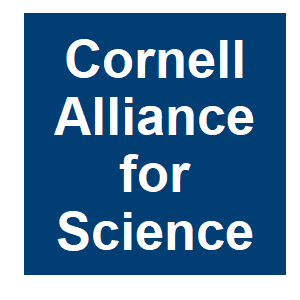
|
Africa kicks against proposed gene drive moratorium at UN Biodiversity ConferenceGakpo, JO, Cornell Alliance for Science, 2018.
Africa has kicked against a proposed moratorium on the environmental release of organisms containing gene drives now under debate at the United Nation’s biodiversity conference in Egypt. Keywords: ethics, gene drive ethics, gene drive guidance, gene drive opinion, gene drive policy, gene drive safety, gene drive synthetic, perspective, risk |

|
Burkina Faso’s mosquito controversy: Consent, awareness and risk assessment in Target Malaria’s gene drive projectFuhr, L, Klima der Gerechtigkeit, 2018.
The 14th Conference of the Parties (COP 14) to the Convention on Biological Diversity is taking place in Sharm El-Sheikh, Egypt, from the 17th to the 29th of November, 2018. Amongst other things, delegates are discussing a moratorium on the release of gene drives, a powerful ... Keywords: ethics, gene drive ethics, gene drive guidance, gene drive opinion, gene drive policy, gene drive safety, gene drive synthetic, perspective, risk |

|
Genetic extinction technology challenged at UN Convention on biodiversityreporter, A, Ekklesia, 2018.
From November 17-29 2018, international conservation and environmental leaders are meeting to call on governments to protect biodiversity and Indigenous Peoples’ and local communities’ rights from controversial new biotechnologies. Friends of the Earth says gene drives have ... Keywords: ethics, gene drive ethics, gene drive guidance, gene drive opinion, gene drive policy, gene drive safety, gene drive synthetic, perspective, risk |

|
Global body to consider moratorium on release of organisms with engineered ‘gene drives’Channel, D, Development Channel, 2018.
Governments from across the globe will consider imposing a temporary ban on the release of organisms carrying altered genes that can propagate through a population, as the consequence of deployment of the technology, which has the potential to eradicate disease, control pests and ... Keywords: ethics, gene drive ethics, gene drive guidance, gene drive opinion, gene drive policy, gene drive safety, gene drive synthetic, perspective, risk |

|
Zambian citizens call on leaders to raise concerns on GMOs at upcoming meeting in EgyptBiodiversity, ZAfAa, Lusakatimes, 2018.
Zambia supports the global call for a moratorium on Gene Drive releases, including applied research such as open field trials Keywords: ethics, gene drive ethics, gene drive guidance, gene drive opinion, gene drive policy, gene drive safety, gene drive synthetic, perspective, risk |

|
Biodiversität durch neue Gentechnik in GefahrGLOBAL 2000, APA-OTS, 2018.
on 17. bis 29. November findet die 14. Vertragsparteienkonferenz des UN-Übereinkommens über die biologische Vielfalt (CBD COP 14) in Sharm El Sheikh, Ägypten, statt. Neben den zahlreichen Artenschutz-Themen muss heuer der Neuen Gentechnik besondere Relevanz beigemessen werden. ... Keywords: ethics, gene drive ethics, gene drive guidance, gene drive opinion, gene drive policy, gene drive safety, gene drive synthetic, perspective, risk |

|
From geoengineering to gene drives: move over, moratoriaWoods, E, In Verba, 2018.
Around this time six years ago I was in Hyderabad in India getting to grips with moratoria. Back then conversations revolved around geoengineering – techniques to reduce global warming by intervening in the Earth’s climate system – and whether a ban on geoengineering ... Keywords: ethics, gene drive ethics, gene drive guidance, gene drive opinion, gene drive policy, gene drive safety, gene drive synthetic, perspective, risk |

|
Il ricercatore comasco: “Così modifichiamo le zanzare per sconfiggere la malaria”Pioppi, dP, Il Giorno, 2018.
Un elemento genetico in grado di intervenire sul cromosoma della zanzara, privandola della possibilità di trasmettere la malaria, che costituisce la prima causa di mortalità al mondo. Rendendo così immuni intere popolazioni. La tecnologia che consente questo risultato, si ... Keywords: ethics, gene drive ethics, gene drive guidance, gene drive opinion, gene drive policy, gene drive safety, gene drive synthetic, perspective, risk |

|
From terminator to exterminatoretc group, etc group, 2018.
20 years after suicide seeds, civil society mobilizes in Egypt this week to stop the sequel – Gene Drive Organisms Keywords: ethics, gene drive ethics, gene drive guidance, gene drive opinion, gene drive policy, gene drive safety, gene drive synthetic, perspective, risk |

|
Let’s say we can force the mosquito into extinction — should we do it?Porterfield, A, Genetic Literacy Project, 2018.
Not many people like mosquitoes. So why not eliminate them?; Newer techniques like CRISPR/Cas9 gene editing may make this possible. A new study by researchers at Imperial College London showed how CRISPR/Cas9 can generate a mutant gene that renders female mosquitos infertile, ... Keywords: ethics, gene drive ethics, gene drive guidance, gene drive opinion, gene drive policy, gene drive safety, gene drive synthetic, perspective, risk |

|
Proposed U.N. test ban on gene drives is idioticBailey, R, Reason, 2018.
A draft resolution would revise the U.N. Convention on Biological Diversity to call on governments to "refrain from" releasing organisms containing engineered gene drives, according to the MIT Technology Review. A gene drive is a technology that can rapidly propagate a particular ... Keywords: ethics, gene drive ethics, gene drive guidance, gene drive opinion, gene drive policy, gene drive safety, gene drive synthetic, perspective, risk |
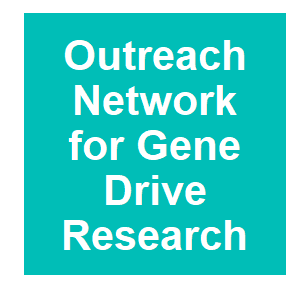
|
Research on gene drive technology can benefit conservation and public health.Outreach Network for Gene Drive Research, Outreach Network for Gene Drive Research, 2018.
As a global community, we are facing life-threatening challenges that undermine our future, from catastrophic loss of biodiversity to acute public health threats. Keywords: ethics, gene drive ethics, gene drive guidance, gene drive opinion, gene drive policy, gene drive safety, gene drive synthetic, perspective, risk |

|
Call for a global moratorium on gene drive releasesNetwork, TW, Biosafety Information Centre, 2018.
Gene drives are a genetic engineering tool that aim to force artificial genetic changes through entire populations of animals, insects and plants. Starting on the 17th of November, Parties to the United Nations Convention on Biological Diversity will meet to discuss measures to ... Keywords: ethics, gene drive ethics, gene drive guidance, gene drive opinion, gene drive policy, gene drive safety, gene drive synthetic, perspective, risk |

|
Malaria auf die drastische Art bekampfenKusma, S, Neue Zürcher Zeitung, 2018.
Gene-Drives sind gentechnische Veränderungen, die sich rasend schnell in Populationen ausbreiten und ganze Arten zum Aussterben bringen könnten. Zur Bekämpfung von Krankheiten birgt das grosses Potenzial. Aber man sollte wissen, was man tut. Keywords: ethics, gene drive ethics, gene drive guidance, gene drive opinion, gene drive policy, gene drive safety, gene drive synthetic, perspective, risk |

|
Scientists divided over new research method to combat malariaSample, I, The Guardian, 2018.
Work on engineered gene used to modify DNA of mosquitoes ‘could be stifled’ by perceived risk to environment Keywords: ethics, gene drive ethics, gene drive guidance, gene drive opinion, gene drive policy, gene drive safety, gene drive synthetic, perspective, risk |

|
Do not betray Africa on synbio and gene drivesetc group, etc group, 2018.
As representatives of a broad range of African civil society organisations (CSOs), we do not feel represented by the delegations of Nigeria and South Africa, speaking on behalf of African Group, in their attempt to speak on behalf of the people of Africa on the issue of synthetic ... Keywords: ethics, gene drive ethics, gene drive guidance, gene drive opinion, gene drive policy, gene drive safety, gene drive synthetic, perspective, risk |

|
Release of risky GM mosquitoes in Burkina faso highly unethical.GM Watch, GM Watch, 2018.
Risky genetically modified (GM) “male-sterile” mosquitoes are due to be released in the near future in Burkina Faso by the Target Malaria research consortium. However, Target Malaria acknowledges that there are no benefits to the proposed GM mosquito release.; ; According to ... Keywords: ethics, gene drive ethics, gene drive guidance, gene drive opinion, gene drive policy, gene drive safety, gene drive synthetic, perspective, risk |
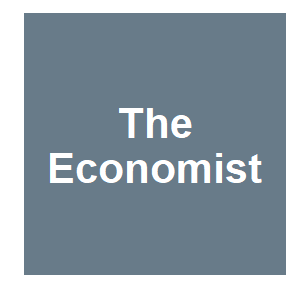
|
Gene drives promise great gains and great dangersThe Economist, The Economist, 2018.
Extinctions are seldom cause for celebration. Humans are wiping out species at a frightening rate, whether hunting them into history or, far more threateningly, damaging the habitats on which they depend. But occasionally, the destruction is warranted. Smallpox was officially ... Keywords: ethics, gene drive ethics, gene drive guidance, gene drive opinion, gene drive policy, gene drive safety, gene drive synthetic, perspective, risk |

|
African Union’s endorsement of unproven gene drive mosquitoes “misguided”GM Watch, GMWatch, 2018.
The African Union (AU) is paving the way for the entry of the latest and most controversial form of genetic engineering – gene drive technologies. In July 2018 the AU released a report endorsing the development of the technology as well as "enabling legislation" for their ... Keywords: ethics, gene drive ethics, gene drive guidance, gene drive opinion, gene drive policy, gene drive safety, gene drive synthetic, perspective, risk |

|
GM mosquitoes in Burkina Faso: Scientists hope to end malaria with genetically modified mosquitoesTimesNowNews, TimesNow, 2018.
Scientists are determined that the release of the genetically engineered mosquitoes in Africa will help eradicate malaria in the region that kills nearly three million people worldwide every year. Keywords: ethics, gene drive ethics, gene drive guidance, gene drive opinion, gene drive policy, gene drive safety, gene drive synthetic, perspective, risk |

|
New GM ‘eradication’ techniques pose grave threat to ecosystemsLaroux, J, The Greens| The European Free Alliance, 2018.
Do you remember those US “radiation movies” from the 1950s and 60s, where mutated animals wreaked havoc, like in the now cult film Them (featuring James Whitemore and some very clever and scary giant ants)? The point that these films were making, apart from the inherent ... Keywords: ethics, gene drive ethics, gene drive guidance, gene drive opinion, gene drive policy, gene drive safety, gene drive synthetic, perspective, risk |

|
Gene drive organisms: German ministry warns of risks from releasesGM Watch, GMWatch, 2018.
The German Ministry for the Environment has, in response to an open letter sent by several civil society organisations, issued a statement very critical of genetically engineered organisms carrying a so-called gene drive. The ministry announced that it will take action on an ... Keywords: ethics, gene drive ethics, gene drive guidance, gene drive opinion, gene drive policy, gene drive safety, gene drive synthetic, perspective, risk |
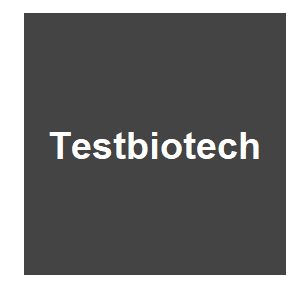
|
Gene drive organisms: Warning of risks due to uncontrolled releasesThen, C, Testbiotech, 2018.
The German Ministry for the Environment has in response to an open letter sent by several civil society organisations issued a statement very critical of genetically engineered organisms carrying a so-called gene drive. The ministry announced that it will take action on an ... Keywords: ethics, gene drive ethics, gene drive guidance, gene drive opinion, gene drive policy, gene drive safety, gene drive synthetic, perspective, risk |

|
Forcing the Farmetc group, etc group, 2018.
This report is being issued as an alert to governments, civil society organisations and grassroots movements. It points to how gene drives, while promoted as a tool for medicine and conservation, will find their real use in food and farming by agribusiness. It calls for a pause ... Keywords: ethics, gene drive ethics, gene drive guidance, gene drive opinion, gene drive policy, gene drive safety, gene drive synthetic, perspective, risk |

|
Gene drives breakthrough needs urgent restraintSteinbrecher, R, GMWatch, 2018.
Gene drive researchers associated with Target Malaria and funded by US DARPA, the GATES Foundation and the UK BBSRC have just managed to crash a population of caged mosquitoes after 7-11 generations.(1); ; This is a first, and it has brought this technology beyond the proof of ... Keywords: ethics, gene drive ethics, gene drive guidance, gene drive opinion, gene drive policy, gene drive safety, gene drive synthetic, perspective, risk |

|
Ethics of sculpting evolutionK. Esvelt, PopTech, 2018.
How might supervillains take over the world, and what can we do about it? Kevin Esvelt, the first to identify the potential for CRISPR “gene drive” systems to alter entire populations of organisms, is calling for a new scientific method that is both open and gives ... Keywords: ethics, gene drive ethics, gene drive guidance, gene drive opinion, gene drive policy, gene drive safety, gene drive synthetic, perspective, risk |
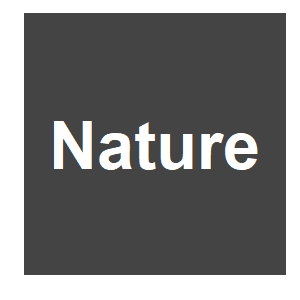
|
Existing rules cover gene-drive usageStrassheim, S.S., W., Nature, 2018.
Keywords: ethics, gene drive ethics, gene drive guidance, gene drive opinion, gene drive policy, gene drive safety, gene drive synthetic, perspective, risk |

|
Letter: Gene Drive and Trust in ScienceBoëte, C, GeneWatch, 2018.
In a recent paper, Emerson et al. present five principles for gene drive research that they argue should be adopted by its sponsors and supporters: 1) advancing quality science to promote the public good; 2) the promotion of stewardship, safety, and good governance principles; 3) ... Keywords: ethics, gene drive ethics, gene drive guidance, gene drive opinion, gene drive policy, gene drive safety, gene drive synthetic, perspective, risk |

|
Editing nature: Local roots of global governanceKofler, N.C., James P.; Kuzma, Jennifer; Marris, Emma; Esvelt, Kevin; Nelson, Michael Paul; Newhouse, Andrew; Rothschild, Lynn J.; Vigliotti, Vivian S.; Semenov, Misha; Jacobsen, Rowan; Dahlman, James E.; Prince, Shannon; Caccone, Adalgisa; Brown, Timothy, Science, 2018.
Keywords: ethics, gene drive ethics, gene drive guidance, gene drive opinion, gene drive policy, gene drive safety, gene drive synthetic, perspective, risk |
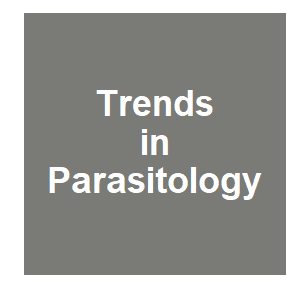
|
Transgenic Mosquitoes – Fact or Fiction?Wilke, A. B. B., J. C. Beier and G. Benelli, Trends in Parasitology, 34:456-465. 2018.
echnologies for controlling mosquito vectors based on genetic manipulation and the release of genetically modified mosquitoes (GMMs) are gaining ground. However, concrete epidemiological evidence of their effectiveness, sustainability, and impact on the environment and nontarget ... Keywords: ethics, gene drive ethics, gene drive guidance, gene drive opinion, gene drive policy, gene drive safety, gene drive synthetic, perspective, risk |

|
Safe Driving: CRISPR and the Gene Drive LandscapeNolan, T, CRISPR Journal, 1:16-18. 2018.
A New Study Highlights Issues About the Capability to Limit Gene Drives in the Field to a Target Population Keywords: ethics, gene drive ethics, gene drive guidance, gene drive opinion, gene drive policy, gene drive safety, gene drive synthetic, perspective, risk |
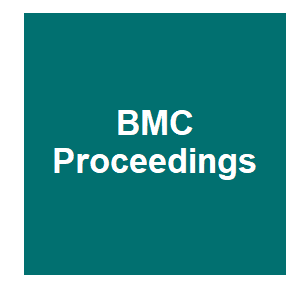
|
Means and ends of effective global risk assessments for genetic pest managementTurner, GB, Camilla; Roda, Lucia, BMC Proceedings, 12:13. 2018.
The development and use of genetic technologies is regulated by countries according to their national laws and governance structures. Legal frameworks require comprehensive technical evidence to be submitted by an applicant on the biology of the organism, its safety to human, ... Keywords: ethics, gene drive ethics, gene drive guidance, gene drive opinion, gene drive policy, gene drive safety, gene drive synthetic, perspective, risk |

|
Pathway to deployment of gene drive mosquitoes as a potential biocontrol tool for elimination of malaria in sub-Saharan Africa: Recommendations of a scientific working groupJames, SC, Frank H.; Welkhoff, Philip A.; Emerson, Claudia; Godfray, H. Charles J.; Gottlieb, Michael; Greenwood, Brian; Lindsay, Steve W.; Mbogo, Charles M.; Okumu, Fredros O.; Quemada, Hector; Savadogo, Moussa; Singh, Jerome A.; Tountas, Karen H.; Touré, American Journal of Tropical Medicine and Hygiene, 98:1-49. 2018.
Gene drive technology offers the promise for a high-impact, cost-effective, and durable method to control malaria transmission that would make a significant contribution to elimination. Gene drive systems, such as those based on clustered regularly interspaced short palindromic ... Keywords: ethics, gene drive ethics, gene drive guidance, gene drive opinion, gene drive policy, gene drive safety, gene drive synthetic, perspective, risk |

|
Can We Engineer Social Ecosystems?TEDxCambridgeSalon, , 2018.
Kevin Esvelt is director of the Sculpting Evolution group, which invents new ways to study and influence the evolution of ecosystems. By carefully developing and testing these methods with openness and humility, the group seeks to address difficult ecological problems for the ... Keywords: ethics, gene drive ethics, gene drive guidance, gene drive opinion, gene drive policy, gene drive safety, gene drive synthetic, perspective, risk |
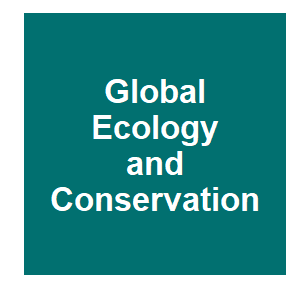
|
Identifying knowledge gaps for gene drive research to control invasive animal species: The next CRISPR stepMoro, DB, Margaret; Kennedy, Malcolm; Campbell, Susan; Tizard, Mark, Global Ecology and Conservation, 13:e00363. 2018.
Invasive animals have been linked to the extinctions of native wildlife, and to significant agricultural financial losses or impacts. Current approaches to control invasive species require ongoing resources and management over large geographic scales, and often result in the ... Keywords: ethics, gene drive ethics, gene drive guidance, gene drive opinion, gene drive policy, gene drive safety, gene drive synthetic, perspective, risk |

|
Public engagement and communication: who is in charge?Boëte, C, EMBO reports, 19:1. 2018.
The discovery of CRISPR has led to the development of gene drive systems that could be used to spread desired traits in a target species or to exterminate a population within a few generations. It is no surprise then that such a controversial and disruptive technology has raised ... Keywords: ethics, gene drive ethics, gene drive guidance, gene drive opinion, gene drive policy, gene drive safety, gene drive synthetic, perspective, risk |

|
Existing rules cover gene-drive usageStrassheim, SS, W., Nature, 554:169. 2018.
Gene-drive technology is not; unregulated, as you imply; (Nature 552, 6; 2017). Because; it involves genetically modified; (GM) organisms, it is covered in; countries that have regulations; on gene modification and; internationally by the Cartagena; Protocol on Biosafety. Keywords: ethics, gene drive ethics, gene drive guidance, gene drive opinion, gene drive policy, gene drive safety, gene drive synthetic, perspective, risk |
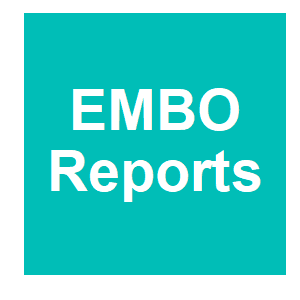
|
Synthetic gene drive: between continuity and novelty: Crucial differences between gene drive and genetically modified organisms require an adapted risk assessment for their useSimon, SO, Mathias; Engelhard, Margret, EMBO Reports, 19:e45760. 2018.
Gene drive organisms differ from “classical” genetically modified organisms in several crucial aspects. It would require new approaches for risk assessment to gauge their potential impact on the environment. While some argue that current risk assessment frameworks can ... Keywords: ethics, gene drive ethics, gene drive guidance, gene drive opinion, gene drive policy, gene drive safety, gene drive synthetic, perspective, risk |

|
Genetically engineered mosquitoes, Zika and other arboviruses, community engagement, costs, and patents: Ethical issuesMeghani, ZB, Christophe, PLOS Neglected Tropical Diseases, 12:e0006501. 2018.
We discuss here key ethical questions raised by the use of GE insects, with the aim of fostering discussion between the public, researchers, policy makers, healthcare organizations, and regulatory agencies at the local, national, and international levels. We affect that goal by ... Keywords: ethics, gene drive ethics, gene drive guidance, gene drive opinion, gene drive policy, gene drive safety, gene drive synthetic, perspective, risk |
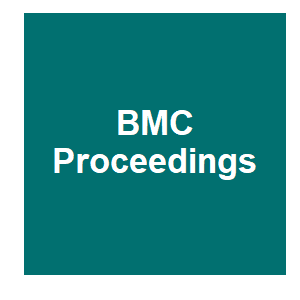
|
Gene drives in our future: challenges of and opportunities for using a self-sustaining technology in pest and vector managementCollins, JP, BMC Proceedings, 12:9. 2018.
Gene drives are systems of biased inheritance that enhance the likelihood a sequence of DNA passes between generations through sexual reproduction and potentially throughout a local population and ultimately all connected populations of a species. Gaps in our knowledge of gene ... Keywords: ethics, gene drive ethics, gene drive guidance, gene drive opinion, gene drive policy, gene drive safety, gene drive synthetic, perspective, risk |

|
Editing nature: Local roots of global governanceKofler, NC, James P.; Kuzma, Jennifer; Marris, Emma; Esvelt, Kevin; Nelson, Michael Paul; Newhouse, Andrew; Rothschild, Lynn J.; Vigliotti, Vivian S.; Semenov, Misha; Jacobsen, Rowan; Dahlman, James E.; Prince, Shannon; Caccone, Adalgisa; Brown, Timothy; Schmitz, Oswald J., Science, 362:527. 2018.
The end of malaria. Restored island habitats. Resiliency for species threatened by climate change. Many envisioned environmental applications of newly developed gene-editing techniques such as CRISPR might provide profound benefits for ecosystems and society. But depending on the ... Keywords: ethics, gene drive ethics, gene drive guidance, gene drive opinion, gene drive policy, gene drive safety, gene drive synthetic, perspective, risk |

|
Open, Local, and ObligatedYale University, , 2017.
Kevin Esvelt, PhD, assistant professor at the MIT Media Lab and leader of the Sculpting Evolution Group talks about the need for new scientific structures based on transparency and open. This lecture was given at the 2017 Editing Nature Summit. Keywords: ethics, gene drive ethics, gene drive guidance, gene drive opinion, gene drive policy, gene drive safety, gene drive synthetic, perspective, risk |

|
CRISPR’s Gene Drive Could Revive Extinct Species–or Create New Ones | Jennifer DoudnaBig Think, , 2017.
A leading gene editing scientist, Jennifer Doudna, discusses gene drive and their applications as well as de-extinction technologies. Keywords: ethics, gene drive ethics, gene drive guidance, gene drive opinion, gene drive policy, gene drive safety, gene drive synthetic, perspective, risk |

|
Open until dangerous: gene drive and the case for reforming research to reduceK. Esvelt, N. Labenz, G. Church, Centre for Effective Altruism, 2017.
The wisdom with which we develop and deploy new technologies will define the future of our civilization. Why do we conduct reseearch in small teams of specialists who cannot reliably anticipate consequences on their own? Might it be better to share our best ideas and plans with ... Keywords: ethics, gene drive ethics, gene drive guidance, gene drive opinion, gene drive policy, gene drive safety, gene drive synthetic, perspective, risk |

|
Gene Drives: A scientific case for a complete and perpetual banLatham, J, GeneWatch, 2017.
One of the central issues of our day is how to safely manage the outputs of industrial innovation. Novel products incorporating nanotechnology, biotechnology, rare metals, microwaves, novel chemicals, and more, enter the market on a daily basis. Yet none of these products come ... Keywords: ethics, gene drive ethics, gene drive guidance, gene drive opinion, gene drive policy, gene drive safety, gene drive synthetic, perspective, risk |

|
Sterile Insect Techniques, GE mosquitoes and gene drivesHanson, J, GeneWatch, 2017.
One of the great temptations in any field is to promote your solution to a problem as the only solution. The recent application of gene drives to sterilize mosquitoes that transmit malaria or viruses like dengue and zika is an example of this tendency to first develop a ... Keywords: ethics, gene drive ethics, gene drive guidance, gene drive opinion, gene drive policy, gene drive safety, gene drive synthetic, perspective, risk |

|
Is it time for synthetic biodiversity conservation?Piaggio, AJS, G.; Seddon, P. J.; Alphey, L.; Bennett, E. L.; Carlson, R. H.; Friedman, R. M.; Kanavy, D.; Phelan, R.; Redford, K. H.; Rosales, M.; Slobodian, L.; Wheeler, K., Trends in Ecology & Evolution, 32:97-107. 2017.
Evidence indicates that, despite some critical successes, current conservation approaches are not slowing the overall rate of biodiversity loss. The field of synthetic biology, which is capable of altering natural genomes with extremely precise editing, might offer the potential ... Keywords: ethics, gene drive ethics, gene drive guidance, gene drive opinion, gene drive policy, gene drive safety, gene drive synthetic, perspective, risk |

|
Precaution: Open gene drive researchEsvelt, KM, Science, 355:589-590. 2017.
IN THEIR POLICY Forum “Precaution and governance of emerging technologies” (11 November 2016, p. 710), G. E. Kaebnick and colleagues convincingly assert that precaution is consistent with support for science. However, they overlook one way to improve safety while hastening ... Keywords: ethics, gene drive ethics, gene drive guidance, gene drive opinion, gene drive policy, gene drive safety, gene drive synthetic, perspective, risk |
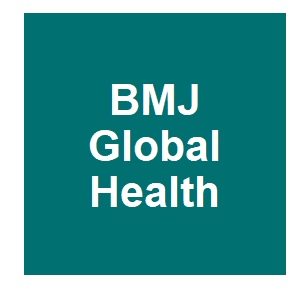
|
Ethical implications of fighting malaria with CRISPR/Cas9Patrão Neves, MD, Christiane, BMJ Global Health, 2:e000396. 2017.
Genome editing is a new, cheap and versatile technique which has great promise to combat vector-borne diseases. The current ethical debate worldwide is mainly concentrating on the dangers of germline intervention and less so on the potential for fighting vector-borne diseases. ; ... Keywords: ethics, gene drive ethics, gene drive guidance, gene drive opinion, gene drive policy, gene drive safety, gene drive synthetic, perspective, risk |
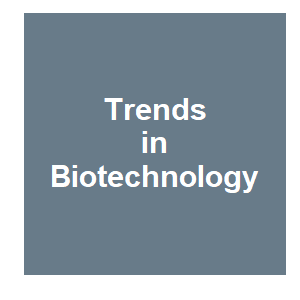
|
A bigger toolbox: Biotechnology in biodiversity conservationR. T. Corlett, Trends in Biotechnology, 35:55-65. 2017.
Conservation biology needs a bigger toolbox to meet unprecedented challenges. Genomics, fueled by declining sequencing costs, offers novel tools with increased precision for genetic questions previously answered with a few molecular markers, as well as completely new ... Keywords: ethics, gene drive ethics, gene drive guidance, gene drive opinion, gene drive policy, gene drive safety, gene drive synthetic, perspective, risk |

|
Agricultural pest control with CRISPR-based gene drive: time for public debate: Should we use gene drive for pest control?Courtier?Orgogozo, VM, Baptiste; Boëte, Christophe, EMBO Reports, 18:878-880. 2017.
Gene drive based on the CRISPR/Cas-9 gene editing system is a powerful technology that promotes the inheritance of the gene drive tool itself via sexual reproduction and can therefore spread quickly through a population. It holds great potential for public health and humanitarian ... Keywords: ethics, gene drive ethics, gene drive guidance, gene drive opinion, gene drive policy, gene drive safety, gene drive synthetic, perspective, risk |
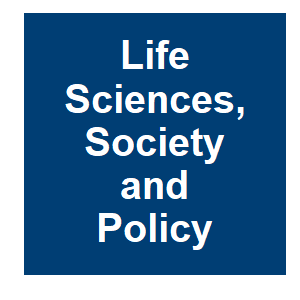
|
Teilhard de Chardin’s oeuvre within an ongoing discussion of a gene drive release for public health reasonsCartolovni, A, Life Sciences, Society and Policy, 13:18. 2017.
Within the domain of public health, vector-borne diseases are among the most vehemently discussed issues. Recent scientific breakthroughs in genome editing technology provided a solution to this issue in the form of a gene drive that might decrease and even eradicate vector-borne ... Keywords: ethics, gene drive ethics, gene drive guidance, gene drive opinion, gene drive policy, gene drive safety, gene drive synthetic, perspective, risk |

|
Recommendations for Laboratory Containment and Management of Gene Drive Systems in ArthropodsBenedict, MQB, Austin; Capurro, Margareth L.; De Barro, Paul; Handler, Alfred M.; Hayes, Keith R.; Marshall, John M.; Tabachnick, Walter J.; Adelman, Zach N., Vector-Borne and Zoonotic Diseases, 18:2-13. 2017.
Versatile molecular tools for creating driving transgenes and other invasive genetic factors present regulatory, ethical, and environmental challenges that should be addressed to ensure their safe use. In this article, we discuss driving transgenes and invasive genetic factors ... Keywords: ethics, gene drive ethics, gene drive guidance, gene drive opinion, gene drive policy, gene drive safety, gene drive synthetic, perspective, risk |

|
Eradicating Mosquitoes? The promise and peril of gene drive technologies.Jun, B-O, Eubios Journal of Asian and International Bioethics, 27:113-116. 2017.
This paper discusses the ethical issues associated with genetic modification of mosquito species that are human disease vectors. The Oxitec genetically changed mosquito—a variant of a species called Aedes aegypti, OX513A, is taken as an example. The benefits and risks are ... Keywords: ethics, gene drive ethics, gene drive guidance, gene drive opinion, gene drive policy, gene drive safety, gene drive synthetic, perspective, risk |
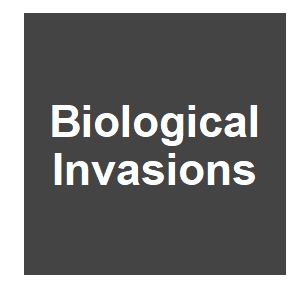
|
Towards the genetic control of invasive speciesHarvey-Samuel, TA, T.; Alphey, L., Biological Invasions, 19:1683-1703. 2017.
Invasive species remain one of the greatest threats to global biodiversity. Their control would be enhanced through the development of more effective and sustainable pest management strategies. Recently, a novel form of genetic pest management (GPM) has been developed in which ... Keywords: ethics, gene drive ethics, gene drive guidance, gene drive opinion, gene drive policy, gene drive safety, gene drive synthetic, perspective, risk |

|
CRISPR/Cas9 gene drive: Growing pains for a new technologyReed, FA, Genetics, 205:1037-1039. 2017.
In this commentary, Floyd Reed discusses Unckless et al. (2017),; “Evolution of resistance against CRISPR/Cas9 gene drive,”; which was published in the February issue of GENETICS. Keywords: ethics, gene drive ethics, gene drive guidance, gene drive opinion, gene drive policy, gene drive safety, gene drive synthetic, perspective, risk |

|
Gene drive and collective oversightEsvelt, K, GeneWatch, 2017.
As one of the scientists who first described how CRISPR could create gene drive systems capable of altering wild; populations, I am morally responsible for the consequences. I'm writing to you in the hope that the people most; critical of the very idea can help. Bluntly, gene ... Keywords: ethics, gene drive ethics, gene drive guidance, gene drive opinion, gene drive policy, gene drive safety, gene drive synthetic, perspective, risk |

|
National Academies hit the brakes on gene drive-modified organismsAbbasi, J., JAMA-Journal of the American Medical Association, 316:482-483. 2016.
Despite their potential for fighting Zika, malaria, and other public health scourges, organisms that have been engineered to quickly spread genetic modifications through a population—and possibly an entire species—are not ready for release into the wild, a committee of ... Keywords: ethics, gene drive ethics, gene drive guidance, gene drive opinion, gene drive policy, gene drive safety, gene drive synthetic, perspective, risk |

|
The Case for a Global Moratorium on Genetically-engineered Gene DrivesCivil Society Working Group on Gene Drives, SynBioWatch, 2016.
In view of the significant ecological, cultural and societal threats posed by genetically-engineered gene drives, including threats to biodiversity, national sovereignty, peace and food security, we the undersigned call upon governments at the 13th Conference of the Parties to ... Keywords: ethics, gene drive ethics, gene drive guidance, gene drive opinion, gene drive policy, gene drive safety, gene drive synthetic, perspective, risk |

|
Biodiversity, GMOs, Gene Drives and the Militarised MindShiva, V, Inter Press Service, 2016.
A recent report from the National Academy of Science of The United States, titled Gene Drives on the Horizon : Advancing Science, Navigating Uncertainty, and Aligning Research with Public Values”, warns:; “One possible goal of release of a gene-drive modified organism is to ... Keywords: ethics, gene drive ethics, gene drive guidance, gene drive opinion, gene drive policy, gene drive safety, gene drive synthetic, perspective, risk |
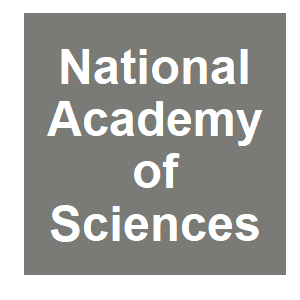
|
Gene Drives on the Horizon: Advancing Science, Navigating Uncertainty, and Aligning Research with Public ValuesU. S. National Academies of Sciences, Engineering, and Medicine, The National Academies Press, 2016.
Scientists have studied gene drives for more than 50 years. The development of a powerful genome editing tool in 2012, CRISPR/Cas9,1 led to recent breakthroughs in gene drive research that built on that half century’s worth of knowledge, and stimulated new discussion of the ... Keywords: ethics, gene drive ethics, gene drive guidance, gene drive opinion, gene drive policy, gene drive safety, gene drive synthetic, perspective, risk |

|
Openly Engineering Our EcosystemsTEDxCambridge, , 2016.
Which technologies should we develop and how? Kevin Esvelt, leader of the Sculpting Evolution group and a professor at the MIT Media Lab, describes how CRISPR 'gene drives' can single-handedly alter entire wild populations and the critical importance of requiring powerful ... Keywords: ethics, gene drive ethics, gene drive guidance, gene drive opinion, gene drive policy, gene drive safety, gene drive synthetic, perspective, risk |

|
Gene drive organisms not ready for environmental releaseWidener, A, Chemical & Engineering News, 2016.
Gene drive technologies have the potential to make important contributions to public health and the environment, but organisms created using them should not be released into the environment at this time, according to a report from the National Academy of Sciences. Gene drives use ... Keywords: ethics, gene drive ethics, gene drive guidance, gene drive opinion, gene drive policy, gene drive safety, gene drive synthetic, perspective, risk |

|
Gene editing can now change an entire species — foreverTED, , 2016.
CRISPR gene drives allow scientists to change sequences of DNA and guarantee that the resulting edited genetic trait is inherited by future generations, opening up the possibility of altering entire species forever. More than anything, this technology has led to questions: How ... Keywords: ethics, gene drive ethics, gene drive guidance, gene drive opinion, gene drive policy, gene drive safety, gene drive synthetic, perspective, risk |
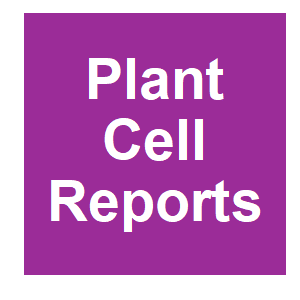
|
Genome editing: intellectual property and product development in plant biotechnologySchinkel, HS, S., Plant Cell Reports, 35:1487-1491. 2016.
Genome editing is a revolutionary technology in molecular biology. While scientists are fascinated with the unlimited possibilities provided by directed and controlled changes in DNA in eukaryotes and have eagerly adopted such tools for their own experiments, an understanding of ... Keywords: ethics, gene drive ethics, gene drive guidance, gene drive opinion, gene drive policy, gene drive safety, gene drive synthetic, perspective, risk |
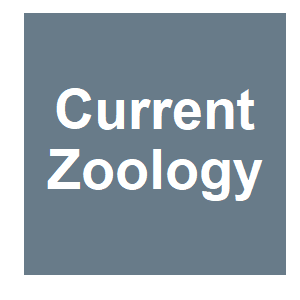
|
Selfish genetic elements and the gene’s-eye view of evolutionÅgren, JA, Current Zoology, 62:659-665. 2016.
During the last few decades, we have seen an explosion in the influx of details about the biology of selfish genetic elements. Ever since the early days of the field, the gene’s-eye view of Richard Dawkins, George Williams, and others, has been instrumental to make sense of new ... Keywords: ethics, gene drive ethics, gene drive guidance, gene drive opinion, gene drive policy, gene drive safety, gene drive synthetic, perspective, risk |
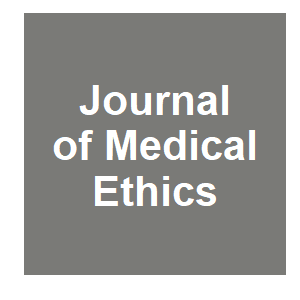
|
Driven to extinction? The ethics of eradicating mosquitoes with gene-drive technologiesPugh, J, Journal of Medical Ethics, 42:578-581. 2016.
Mosquito-borne diseases represent a significant global disease burden, and recent outbreaks of such diseases have led to calls to reduce mosquito populations. Furthermore, advances in gene-drive' technology have raised the prospect of eradicating certain species of mosquito via ... Keywords: ethics, gene drive ethics, gene drive guidance, gene drive opinion, gene drive policy, gene drive safety, gene drive synthetic, perspective, risk |

|
Putting the brakes on CRISPR-Cas9 gene drive systemsGraham, DM, Lab Animal, 45:47-47. 2016.
The sudden emergence and worldwide adoption of CRISPR gene-editing technology confronts humanity with unprecedented opportunities and choices. CRISPR's transformative impact on our future understanding of biology, along with its potential to unleash control over the most ... Keywords: ethics, gene drive ethics, gene drive guidance, gene drive opinion, gene drive policy, gene drive safety, gene drive synthetic, perspective, risk |

|
The dawn of active geneticsGantz, VMB, E., Bioessays, 38:50-63. 2016.
On December 18, 2014, a yellow female fly quietly emerged from her pupal case. What made her unique was that she had only one parent carrying a mutant allele of this classic recessive locus. Then, one generation later, after mating with a wild-type male, all her offspring ... Keywords: ethics, gene drive ethics, gene drive guidance, gene drive opinion, gene drive policy, gene drive safety, gene drive synthetic, perspective, risk |
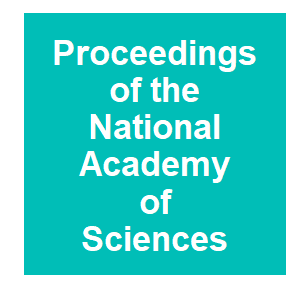
|
Opinion: Is CRISPR-based gene drive a biocontrol silver bullet or global conservation threat?Webber, BLR, S.; Edwards, O. R., Proceedings of the National Academy of Sciences of the United States of America, 112:10565-10567. 2015.
Scientists have recognized the potential for applying gene drive technologies to the control of invasive species for several years, yet debate about the application of gene drive has been primarily restricted to mosquitoes. Recent developments in clustered regularly interspaced ... Keywords: ethics, gene drive ethics, gene drive guidance, gene drive opinion, gene drive policy, gene drive safety, gene drive synthetic, perspective, risk |

|
Safeguarding CRISPR-Cas9 gene drives in yeastDiCarlo, JEC, A.; Dietz, S. L.; Esvelt, K. M.; Church, G. M., Nature Biotechnology, 33:1250-1255. 2015.
RNA-guided gene drives capable of spreading genomic alterations made in laboratory organisms through wild populations could be used to address environmental and public health problems. However, the possibility of unintended genome editing occurring through the escape of strains ... Keywords: ethics, gene drive ethics, gene drive guidance, gene drive opinion, gene drive policy, gene drive safety, gene drive synthetic, perspective, risk |

|
Safeguarding gene drive experiments in the laboratoryAkbari, OSB, H. J.; Bier, E.; Bullock, S. L.; Burt, A.; Church, G. M.; Cook, K. R.; Duchek, P.; Edwards, O. R.; Esvelt, K. M.; Gantz, V. M.; Golic, K. G.; Gratz, S. J.; Harrison, M. M.; Hayes, K. R.; James, A. A.; Kaufman, T. C.; Knoblich, J.; Malik, H. S.; Matthews, K. A.; O'Connor-Giles, K. M.; Parks, A. L.; Perrimon, N.; Port, F.; Russell, S.; Ueda, R.; Wildonger, J., Science, 349:927-929. 2015.
Gene drive systems promote the spread of genetic elements through populations by assuring they are inherited more often than Mendelian segregation would predict (see the figure). Natural examples of gene drive from Drosophila include sex-ratio meiotic drive, segregation ... Keywords: ethics, gene drive ethics, gene drive guidance, gene drive opinion, gene drive policy, gene drive safety, gene drive synthetic, perspective, risk |

|
Broadening the application of evolutionarily based genetic pest managementGould, F, Evolution, 62:500-510. 2008.
Insect- and tick-vectored diseases such as malaria, dengue fever, and Lyme disease cause human suffering, and current approaches for prevention are not adequate. Invasive plants and animals such as Scotch broom, zebra mussels, and gypsy moths continue to cause environmental ... Keywords: ethics, gene drive ethics, gene drive guidance, gene drive opinion, gene drive policy, gene drive safety, gene drive synthetic, perspective, risk |
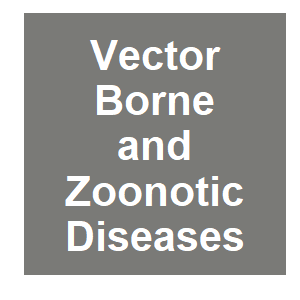
|
Guidance for contained field trials of vector mosquitoes engineered to contain a gene drive system: Recommendations of a scientific working groupBenedict, MDA, P.; Dobson, S.; Gottlieb, M.; Harrington, L.; Higgs, S.; James, A.; James, S.; Knols, B.; Lavery, J.; O'Neill, S.; Scott, T.; Takken, W.; Toure, Y.; Core Working Grp Guidance, Containe, Vector-Borne and Zoonotic Diseases, 8:127-166. 2008.
The following recommendations represent the response of a group of involved scientists to the need for guidance to aid researchers, government authorities, and community leaders as they consider the design and implementation of field trials to assess the safety and efficacy of ... Keywords: ethics, gene drive ethics, gene drive guidance, gene drive opinion, gene drive policy, gene drive safety, gene drive synthetic, perspective, risk |
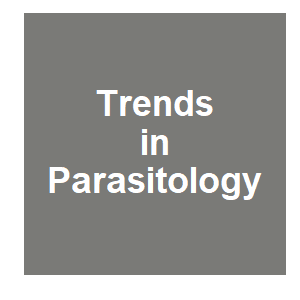
|
Gene drive systems in mosquitoes: rules of the roadJames, AA, Trends in Parasitology, 21:64-67. 2005.
Population replacement strategies for controlling transmission of mosquito-borne diseases call for the introgression of antipathogen effector genes into vector populations. It is anticipated that these genes, if present at high enough frequencies, will impede transmission of the ... Keywords: ethics, gene drive ethics, gene drive guidance, gene drive opinion, gene drive policy, gene drive safety, gene drive synthetic, perspective, risk |
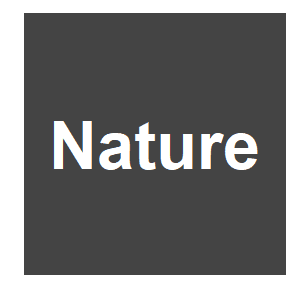
|
Genetics-driving genes and chromosomesCharlesworth, B, Nature, 332:394-395. 1988.
Thereare several genetic and chromosomal systems in which Mendel's first law - the equal probability of transmission of maternal and paternal alternative alleles or homologues - is violated. This phenomenon was named 'meiotic drive' in 1957 by Sandler and Novitski, who drew ... Keywords: ethics, gene drive ethics, gene drive guidance, gene drive opinion, gene drive policy, gene drive safety, gene drive synthetic, perspective, risk |

Contact
David O’Brochta
Foundation for the
National Institutes of Health
geneconvenevi@fnih.org
RSS

